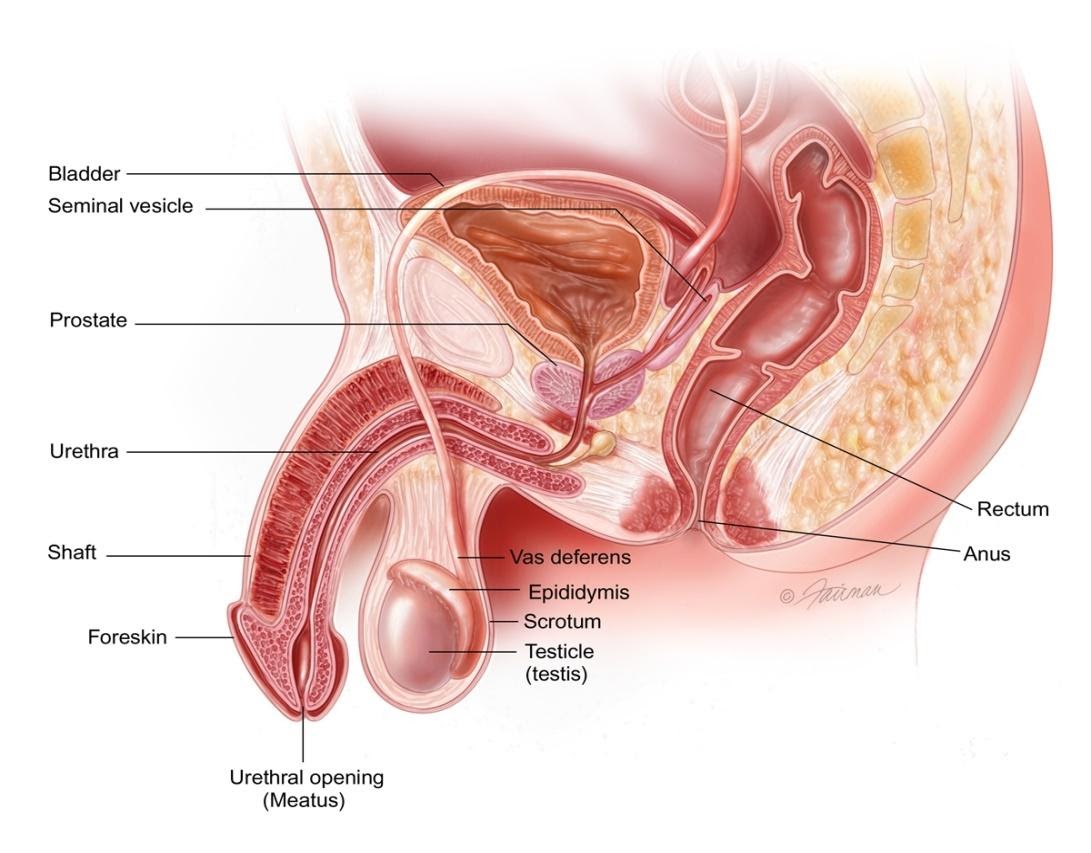While the penis is one of the least harmed organs, accidents can happen. Though not common, large hospitals may see a number of cases of penile injuries each year.
How Does the Penis Normally Work?
The main roles of the penis are to carry urine and sperm out of the body. There are 3 tubes inside the penis. One is called the urethra. It is hollow and carries urine from the bladder through the penis to the outside. The other 2 tubes are called the corpora cavernosa. These are spongy tubes that are soft until filled with blood during an erection. The 3 tubes are wrapped together by a very tough fibrous sheath called the tunica albuginea. During sex, the stiffness of the penis makes it hard enough to be inserted into the woman’s vagina. In this case, the urethra acts as a channel for semen to be ejaculated into the vagina.

Penile Trauma or Fracture Causes
The penis is hurt much less often than other parts of the body. It can be wounded as a result of car accidents, machinery accident, intercourse, gunshot wounds, sports accidents and burns.
The penis is most often hurt during sex. Injury to the penis is rare when it isn’t erect because it is flexible. During an erection, blood flow in the arteries makes the penis firm. During forceful thrusting, the erect penis may slip out of the vagina and strike the partner instead of going back into the vagina. The penis may then bend sharply despite the erection. You may feel a sharp pain in the penis and maybe hear a “popping” sound. This is often followed by a rapid loss of the erection. The pain and sound are made by a tear in the tunica albuginea, which is stretched tightly during an erection. Urologists often call this injury a penile “fracture,” even though there is no bone in the penis. The pain may last for a short time or it may continue. Blood can build up under the skin of the penis (hematoma), and may become swollen and badly bruised. Blood at the tip of the penis or in the urine is a sign of a serious injury to the urethra.
Placing a rubber tube or other constricting device around the base of the penis that is too tight or left on for too long can also injure the penis. Rings or other stiff objects (such as plastic or metal) should never be placed around the penis. These objects can become stuck if the penis swells further. These items can cause lasting damage to the penis if the blood flow is blocked for too long. The urethra and/or penis may also be damaged if objects are put into the tip of the penis.
Penile Trauma or Fracture Diagnosis
If you’ve injured your penis, your urologist will ask you about your medical history and perform a physical exam, along with blood and urine tests. The goal is to gauge the damage to the penis.
Your urologist may gently place a fiber optic camera into your urethra to check for damage. You might also have an X-ray study called a “retrograde urethrogram.”
This is performed by injecting a special dye through the urethra and then taking X-rays. If the X-ray shows the dye leaking outside the urethra, it may suggest damage to that part of the urinary tract. Your urologist might also want to see images of the inside of your penis by ultrasound (sound waves) or MRI (radio waves in a strong magnetic field).
Penile Trauma or Fracture Treatment
The treatment for a penis “fractured” during sex is most often surgery. This treatment has lower rates of erectile dysfunction, and penile scarring and curvature. Surgery is done under anesthesia so no pain is felt. The most common surgery is to make a cut around the shaft near the head of the penis and pull back the skin to the base to check the inner surface. The surgeon will then remove blood clots to help find any tears in the tunica albuginea. Any tears are repaired before the skin is sewn back together. A catheter (a thin tube) may be placed through the urethra into the bladder to drain urine and allow the penis to heal. With the whole penis bandaged, you may stay in the hospital for 1 or 2 days. You may go home with or without the catheter. You may be given antibiotics and pain meds. Your surgeon will want to follow up with an office visit to check on healing.
For Serious Trauma
For the rare cases where part of the penis has been accidentally cut off, the amputated part should be wrapped in gauze soaked in sterile salt solution and placed in a plastic bag. The plastic bag should then be put into a second bag or cooler with an ice water slush. Do not place any amputated organ into ice water, as the water and direct contact with ice is harmful to tissue. If the penis can be reattached, the lower temperature of the slush will increase the chances of success. It may be possible to reattach the penis even after 16 hours.
For massive injuries to the penis, urologists who are skilled at this surgery can often rebuild the penis. How well the penis will work after the surgery depends on how badly it was damaged.
After Treatment
Most cases of fractured penis caused by sex and most other minor penile wounds will heal without problems if treated at once. Still, problems can and do happen. Some problems are:
- Infection
- Erectile dysfunction (due to blockage of the nerve or blood flow to the penis)
- Priapism (the penis becomes stiff and stays hard to the point of pain)
- Curved penis (Peyronie’s disease) after the wound has healed
Prevention
In most cases, injuries to the penis caused by sex can be prevented if your partner is simply aware that it can happen. Most often, penile “fractures” occur with the female partner on top. If your penis is stiff and slips from your partner’s vagina, stop the thrusting at once.


